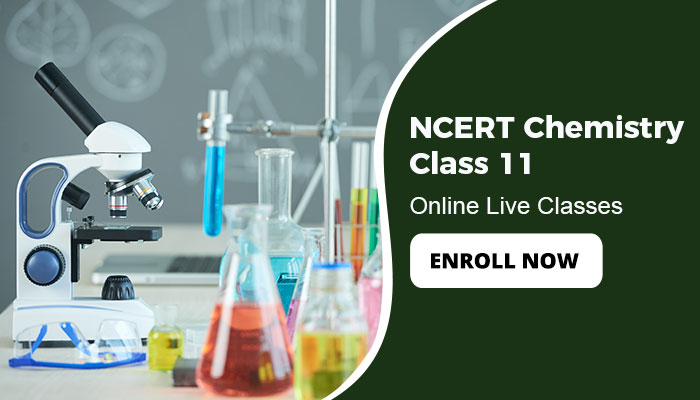SYLLABUS
Unit 1 Some Basic Concepts of Chemistry
1.1 Importance of Chemistry
1.2 Nature of Matter
1.3 Properties of Matter and their Measurement
1.4 Uncertainty in Measurement
1.5 Laws of Chemical Combinations
1.6 Dalton’s Atomic Theory
1.7 Atomic and Molecular Masses
1.8 Mole Concept and Molar Masses
1.9 Percentage Composition
1.10 Stoichiometry and Stoichiometric Calculations
Unit 2 Structure of Atom
2.1 Discovery of Sub-atomic Particles
2.2 Atomic Models
2.3 Developments Leading to the Bohr’s Model of Atom
2.4 Bohr’s Model for Hydrogen Atom
2.5 Towards Quantum Mechanical Model of the Atom
2.6 Quantum Mechanical Model of Atom
Unit 3 Classification of Elements and Periodicity in Properties
3.1 Why do we Need to Classify Elements ?
3.2 Genesis of Periodic Classification
3.3 Modern Periodic Law and the present form of the Periodic Table
3.4 Nomenclature of Elements with Atomic Numbers >
3.5 Electronic Configurations of Elements and the Periodic Table
3.6 Electronic Configurations and Types of Elements:s-, p-, d-, f- Blocks
3.7 Periodic Trends in Properties of Elements
Unit 4 Chemical Bonding and Molecular Structure
4.1 Kössel-Lewis Approach to Chemical Bonding
4.2 Ionic or Electrovalent Bond
4.3 Bond Parameters
4.4 The Valence Shell Electron Pair Repulsion (VSEPR) Theory
4.5 Valence Bond Theory
4.6 Hybridisation
4.7 Molecular Orbital Theory
4.8 Bonding in Some Homonuclear Diatomic Molecules
4.9 Hydrogen Bonding
Unit 5 States of Matter
5.1 Intermolecular Forces
5.2 Thermal Energy
5.3 Intermolecular Forces vs Thermal Interactions
5.4 The Gaseous State
5.5 The Gas Laws
5.6 Ideal Gas Equation
5.7 Kinetic Energy and Molecular Speeds
5.8 Kinetic Molecular Theory of Gases
5.9 Behaviour of Real Gases: Deviation from Ideal Gas Behaviour
5.10 Liquefaction of Gases
5.11 Liquid State
Unit 6 Thermodynamics
6.1 Thermodynamic Terms
6.2 Applications
6.3 Measurement of ∆U and ∆H: Calorimetry
6.4 Enthalpy Change, ∆rH of a Reaction – Reaction Enthalpy
6.5 Enthalpies for Different Types of Reactions
6.6 Spontaneity
6.7 Gibbs Energy Change and Equilibrium
Unit 7 Equilibrium
7.1 Equilibrium in Physical Processes
7.2 Equilibrium in Chemical Processes – Dynamic Equilibrium
7.3 Law of Chemical Equilibrium and Equilibrium Constant
7.4 Homogeneous Equilibria
7.5 Heterogeneous Equilibria
7.6 Applications of Equilibrium Constants
7.7 Relationship between Equilibrium Constant K,Reaction Quotient Q and Gibbs Energy G
7.8 Factors Affecting Equilibria
7.9 Ionic Equilibrium in Solution
7.10 Acids, Bases and Salts
7.11 Ionization of Acids and Bases
7.12 Buffer Solutions
7.13 Solubility Equilibria of Sparingly Soluble Salts
Unit 8 Redox Reactions
8.1 Classical Idea of Redox Reactions-Oxidation and Reduction Reactions
8.2 Redox Reactions in Terms of Electron Transfer Reactions
8.3 Oxidation Number
8.4 Redox Reactions and Electrode Processes
Unit 9 Hydrogen
9.1 Position of Hydrogen in the Periodic Table
9.2 Dihydrogen, H2
9.3 Preparation of Dihydrogen, H2
9.4 Properties of Dihydrogen
9.5 Hydrides
9.6 Water
9.7 Hydrogen Peroxide (H2O2)
9.8 Heavy Water, D2O
9.9 Dihydrogen as a Fuel
Unit 10 The s-Block Elements
10.1 Group 1 Elements: Alkali Metals
10.2 General Characteristics of the Compounds of the Alkali Metals
10.3 Anomalous Properties of Lithium
10.4 Some Important Compounds of Sodium
10.5 Biological Importance of Sodium and Potassium
10.6 Group 2 Elements : Alkaline Earth Metals
10.7 General Characteristics of Compounds of the Alkaline Earth Metals
10.8 Anomalous Behaviour of Beryllium
10.9 Some Important Compounds of Calcium
10.10 Biological Importance of Magnesium and Calcium
Unit 11 The p-Block Elements
11.1 Group 13 Elements: The Boron Family
11.2 Important Trends and Anomalous Properties of Boron
11.3 Some Important Compounds of Boron
11.4 Uses of Boron and Aluminium and their Compounds
11.5 Group 14 Elements: The Carbon Family
11.6 Important Trends and Anomalous Behaviour of Carbon
11.7 Allotropes of Carbon
11.8 Some Important Compounds of Carbon and Silicon
Unit 12 Organic Chemistry – Some Basic Principles and Techniques
12.1 General Introduction
12.2 Tetravalence of Carbon: Shapes of Organic Compounds
12.3 Structural Representations of Organic Compounds
12.4 Classification of Organic Compounds
12.5 Nomenclature of Organic Compounds
12.6 Isomerism
12.7 Fundamental Concepts in Organic Reaction Mechanism
12.8 Methods of Purification of Organic Compounds
12.9 Qualitative Analysis of Organic Compounds
12.10 Quantitative Analysis
Unit 13 Hydrocarbons
13.1 Classification
13.2 Alkanes
13.3 Alkenes
13.4 Alkynes
13.5 Aromatic Hydrocarbon
13.6 Carcinogenicity and Toxicity
Unit 14 Environmental Chemistry
14.1 Environmental Pollution
14.2 Atmospheric Pollution
14.3 Water Pollution
14.4 Soil Pollution
14.5 Industrial Waste
14.6 Strategies to control Environmental Pollution
14.7 Green Chemistry


